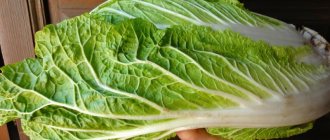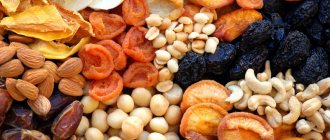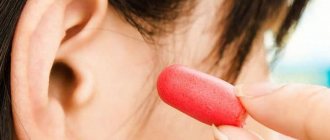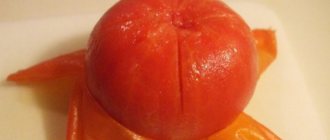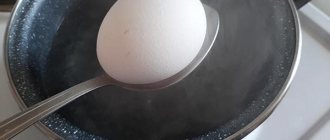How often do you wash dried fruits brought from the store? There are people who seriously don’t even understand why they need to be washed. This is the wrong approach. And some, concerned about the safety of their body, simply rinse them under running water. You can't do that either.
Let's talk about what needs to be done with dried fruits brought from the store so that they enter the stomach, being as safe as possible for health, and so that all the beneficial substances contained inside (and there are a lot of them) are well absorbed by the body.
Why wash and soak dried fruits?
After purchasing, many people have a well-founded question: do they need to wash dried fruits, and if so, how to wash them correctly?
To answer this question, let's first understand how dried fruits are produced and processed.
To turn fresh fruits into dried fruits, they must be subjected to a drying process. As a result, dull, wrinkled, dark and not very pleasant-looking fruits and berries are obtained. Therefore, after drying, they are further processed.
Processing is carried out to improve the appearance of the product. However, this is not the most important thing. The main purpose of processing is to prevent rotting and increase the shelf life of dried fruits.
For the production and processing of dried fruits: prunes, dried apples, raisins, dried apricots, etc. Various preservatives are used. For example, they can take sodium benzoate (E 211) or potassium sorbate (E 202). They kill yeast and molds.
Tips for storing capricious fruits
What can be prepared from fruits: a list of dishes, interesting recipes and cooking rules
Knowledge of the peculiarities of their preservation will help to extend the shelf life of “capricious” berries:
| Type of dried fruit | Storage Features |
| Prunes | Dried plums are stored at a temperature not exceeding +20 degrees Celsius for about 3 months. If the apartment is too hot, the berries are stored in the freezer. Paper or vacuum bags, glass containers are suitable for packaging. |
| Dried apricots, apricots | If possible, it is better to prepare dried apricots yourself. Such fruits have a lower percentage of moisture compared to factory-made ones. Dried apricots should be stored in a dark place, placed in a cloth package. However, long-term storage in bags will lead to excessive drying of dried apricots and the appearance of a white coating. Then the fruits are placed in the freezer. This will help preserve them for 2 years. Dried apricots are defrosted at a temperature of +20-23 degrees Celsius |
| Raisin | It is not advisable to place raisins in the refrigerator. It loves air, so it is preferable to place it in fabric bags made of cotton or linen. Glass containers are closed with paper instead of a lid. If the raisins dry out, sprinkle them with water and place them in the microwave for 1 minute. |
| Dates, figs | These fruits do not keep well at room temperature. It is better to put sweet drying in a vacuum bag, a container with a lid and place it in the refrigerator. Plastic bags are not suitable for this purpose. Supplies are not washed during preparation. The savings period will be 4 months |
Be sure to read:
How to store figs: 3 options and 5 recipes for storing and preparing
Sulfur dioxide in dried fruits
Note!
It is worth knowing that the most important preservative used for processing dried fruits is sulfur dioxide - this is a gas poisonous to human breathing; it is released when sulfur powder is set on fire. Preserving fruits using this method is called sulfitation.
How does it work? Dried fruits are sprinkled with sulfur powder on top and set on fire. As a result of the combustion process, a toxic gas with an unpleasant pungent odor is formed - sulfur dioxide. Breathing it is very dangerous and is strictly prohibited, as this gas can cause speech impairment, suffocation and pulmonary edema.
Is it really possible that healthy foods can slowly kill us? No, everything is not as scary as you might think at first glance. The fact is that sulfur dioxide is really harmful, but only if you breathe this gas; in the products themselves, its content is negligible.
The question arises, why is such a dangerous treatment used?
The thing is that dried fruits are a very perishable product and can be stored warm for only a short time. If you keep fruits in conditions unsuitable for this, then very soon rotting and spoilage may begin.
Sulfitation is a technology that perfectly protects dried fruits from rotting and harmful microorganisms. Thanks to this treatment, they do not darken over time, the appearance of the fruit is improved and preserved.
For example, sulfated dried apricots are beautiful, bright, appetizing, while natural dried apricots without processing are dark and wrinkled. If you want to eat fruits without unnecessary chemicals, when buying, do not chase a beautiful appearance, not everything beautiful is useful!
We conclude: since dried fruits are subject to chemical treatment, the answer to this question, whether dried fruits need to be washed, is unambiguous - dried fruits must be washed. Even if the fruits look clean and no particles of dirt and dust are visible on them.
Do I need to wash dried cranberries?
It is very advisable to rinse dried cranberries!
- If it is in a package, then read here how to wash it before eating.
- If you purchase dried cranberries at the market or elsewhere, by weight, etc. wash it using one of these methods.
After washing, dry it - now you can use it.
How to cook dried fruit compote so that the drink turns out full of vitamins and tastes good
Nuts have many beneficial properties, but you should also be aware of the harm they can cause.
A light salad that can be prepared even in the cold season.
What is the difference between olives and olives, how are olives produced?
Learn how to choose dried fruits. What are their benefits and when can they cause harm?
Healthy lifestyle
Dried fruits, which can be found in large quantities on store shelves, can be not only unhealthy, but also dangerous to eat. It all depends on what drying method was used to obtain them.
The value and usefulness of dried fruits has been confirmed by many studies. Dried apricots, raisins, dates, figs, prunes contain many vitamins that are so necessary for our body and, especially, the heart.
All these valuable properties are preserved in “correct” dried fruits - dried fruits that have not been subjected to special treatment with toxic chemicals, including dyes. It is this fairly cheap method of quickly drying fruits, which allows you to save resources, significantly increase the shelf life of dried fruits and give them a “marketable” appearance, that is used to obtain the majority of dried fruits.
The safest and healthiest are only those dried fruits that were obtained in the traditional way - natural drying.
To obtain dried fruits, the following types of drying are used:
– drying in the sun. The fruits obtained in this way are hard, which is not the best option.
– drying in the shade allows you to get semi-soft fruits. Compared to sun drying, this is a better method.
– treatment with toxic chemicals (sulfur dioxide - sulfur dioxide, additive E220) and heat treatment. These dried fruits are the most common on sale. They have an attractive appearance, but they are unsafe for health.
This is one of the simplest and most affordable ways to obtain dried fruits. Firstly, sulfur dioxide treatment is much faster than natural drying. Secondly, after such processing the fruits remain soft, underdried and weigh more than ordinary dried fruits devoid of moisture. Thirdly, as a preservative, sulfur dioxide helps such under-dried dried fruits not to spoil. Sulfur dioxide kills bacteria, but it is also toxic to humans. Please note: dried fruits processed in this way are not eaten by pests!
The use of chemicals for “drying” allows even unripe fruits to be used. They are immersed in boiling water with sodium hydroxide (caustic soda). This causes the hard skin to crack and the fruit to dry more easily. And in order to kill bacteria that grow in cracks in the peel, fruits are treated with the same sulfur dioxide.
Another way to obtain dried fruits is through smoking with liquid smoke, an equally dangerous carcinogen. To add shine, the surface of dried fruits is treated with fat or glycerin.
After treatment with these and similar substances, dried fruits become shiny, their color intensifies - bright dried apricots, shiny prunes, golden raisins... Appetizing, but unsafe.
Such dried fruits should never be eaten unwashed. But even regular rinsing under running water will not be enough. In our body, sulfur dioxide under the influence of liquid turns into a weak solution of sulfurous acid, which irritates the mucous membrane of the digestive system, which over time can cause a number of diseases.
Why soak dried fruits?
There are enough reasons to perform such a simple action as soaking dried fruits:
In the process of processing and delivery to the final destination, dried fruits go through quite a long journey, as a result of which they become quite heavily contaminated from the environment and hands. During soaking, the folds of the fruit are straightened out, all the dirt is washed out of them, otherwise it will be practically inside the fruit.
Perhaps the dried fruits you purchased have been processed in some way to ensure a longer shelf life and greater preservation. Soaking in water removes almost any chemical treatment.
It is important to know!
When fumigated with sulfur, cheese dioxide settles on the processed fruits and is very difficult to remove by ordinary washing with water. However, during soaking, the sulfur rises to the surface of the water and can be poured into the sink, and then rinsed again with clean water. This way you get the purest dried fruits possible.
It is much healthier for our body to eat soaked dried fruits. The fact is that the gastrointestinal tract accepts softer and ready-to-digest food much better, while hard food is difficult for the gastrointestinal tract to digest.
Soaking activates the maximum amount of substances beneficial to the body in dried fruits: microelements and vitamins! By pouring out the dirty water after the first soaking and soaking the fruits in clean water again, you will get a healthy vitamin compote without cooking.
Preparing dried fruits for storage
Dried fruits that are purchased in stores and are factory packaged, as a rule, are stored well and do not cause any special problems. Although here a lot depends on the integrity of the manufacturer.
Self-dried fruits should be carefully prepared for storage:
- in the process of preparing for drying, cut the fruit into equal slices so that they dry evenly;
- While drying, stir the dried fruits periodically, removing spoiled ones, turning them over and removing the finished ones;
- before storing fruits, sort them carefully, removing those that look unpresentable, are not dried and are beginning to deteriorate;
- In the place where the fruit will be stored, place products that have a strong smell (mint, oregano, citrus fruits) to repel possible insects.
How to wash dried fruits
Let's take a closer look at the question: how to properly wash dried fruits before eating?
In order to be absolutely sure that even a small dose of poison will not enter your body along with a healthy product, purchased dried fruits must not only be washed in water, but soaked. You will now learn how to soak dried fruits correctly.
Classic method of soaking fruits
You probably want to know how to remove sulfur dioxide from dried fruits?
To do this, soak the dried fruits in warm water for about 30 minutes. During this time, the sulfur dioxide with which they are treated will dissolve and transfer to the water. We drain the contaminated water and rinse the fruits well under running water.
It is worth highlighting three common methods of preparing dried fruits for consumption.
Method No. 1
- Pour dried fruits with water at room temperature and soak for 30 minutes.
- Then rinse the fruits well with clean water.
Method No. 2
- Pour cold water over the dried fruits for 10-15 minutes, stirring them periodically during the soaking period.
- Drain the water and rinse under running cold water.
- After this, rinse thoroughly with boiling water again.
Method No. 3 - for natural dried fruits
This method is suitable for fruits that are dried naturally.
In appearance, they will be less presentable and beautiful, since during the natural drying process they lose their texture and color. However, such dried fruits do not contain chemicals or harmful preservatives. Before use, it will be enough to rinse them well with warm water.
How to wash dried apricots
Are you wondering: do you need to wash dried apricots? Regardless of whether the fruits have been treated with sulfur dioxide or not, dried apricots need to be washed.
It is important!
If you purchased natural dried apricots and know that they have not been processed in any way, then it will be enough to rinse them thoroughly under running water, thus removing any adhering dirt and dust. To be more sure, you can pour hot water over the fruits and then give them to children.
In most cases, dried apricots are treated with sulfur dioxide - outwardly they look clean, beautiful and very bright. However, to remove excess chemicals, more effort must be spent to properly wash the fruits.
First, soak the dried apricots for half an hour in water at room temperature. After this time, rinse it well under running water. Now everything is ready, and you can safely eat dried apricots.
Quite often, customers ask questions that concern them: “how to wash prunes and dried apricots” or “how to properly wash raisins and dried apricots” - it’s worth knowing that the washing methods for raisins and prunes are exactly the same as we used for dried apricots.
How to soak dried apricots correctly
Dried apricots need to be soaked in water at room temperature. The soaking time for the fruit is 30-40 minutes, or maybe longer - it depends on the softness of the dried apricots you prefer to eat. The longer it sits in water, the softer it will become.
How to properly wash raisins
Do you need to wash raisins? Of course, it needs to be washed, like any other dried fruit!
Note!
Any doctor will tell you that not every person’s body can digest and accept unwashed and solid foods.
Properly washing raisins is not difficult. Soak the berries in warm water for 30 minutes, and after this time, drain the water and rinse with cold water.
How to wash dried prunes
The universal advice is this: be sure to wash all dried fruits, or even better, soak them in water before eating! To make prunes softer, you need to soak them for 30 minutes in hot water (but not in boiling water).
How to remove glycerin from prunes?
- soak the prunes for 60 minutes in water ~20ºС;
- then rinse well under running water.
How to wash figs
Do figs need to be washed? And Uzbek, Tajik, Uzbek and Turkish figs must be washed. Figs produced in Turkey need to be soaked and washed more thoroughly and longer than dried Tajik ones, because they are processed.
Worth knowing!
If you want to make the figs soft, soak them in hot water and keep them until they get the softness you want, and then consume.
How to wash dates
Many people love dates for their excellent taste and benefits for the body. If you purchased these dried fruits at the market, you probably asked yourself the question of how to wash dates before eating and is it necessary to do so? The answer to this is unequivocal - dates need to be washed!
- we sort through the dates: exclude spoiled, too dry and damaged fruits;
- To rinse dates, you need to use a colander and a bowl of water at room temperature;
- fruits should be washed quickly and in small portions;
- Shiny dried fruits need to be washed especially carefully;
- Place the washed dates in a bowl into a colander and rinse well again under running cold water;
- To dry, use a paper or regular towel.
Note!
Never wash or soak dates in boiling water! If you do this, the delicate skin of the fruit will crack and the pulp will “boil”, after which they will become completely unpalatable.
Santa Claus or Santa Claus?
What is possible and healthy to eat during swelling?
Have you already fearfully directed your distressed gaze at homemade dried fruit? Very in vain! Yes, it is tatty, brown and dried at room temperature. But even this does not make it a particularly healthy food. The fact is that almost any fruit and vegetable contains enzymes that destroy vitamins. When storing a fruit (and a vegetable, too, by the way) at room temperature, these serial vitamin killers become active and destroy most of the beneficial content in the fruit. Therefore, fruits and vegetables, by the way, should only be stored in the refrigerator.
Table 1 shows average data on the destruction of vitamins during rapid drying in home dryers at low temperatures. And with slow drying and high-temperature drying, losses, accordingly, increase significantly.
Table 1
Typical Loss of Nutritional Benefits from Processed Foods Compared to Raw Foods
| VITAMINS | FREEZE | DRYING | BOILING, PRESERVATION |
| VITAMIN A | 5% | 50% | 25% |
| ALPHA CAROTENE | 5% | 50% | 25% |
| BETA CAROTENE | 5% | 50% | 25% |
| LYCOPINE | 5% | 50% | 25% |
| LUTHEIN + ZEAXANTHIN | 5% | 50% | 25% |
| VITAMIN C | 30% | 80% | 50% |
| THIAMIN | 5% | 30% | 55% |
| RIBOFLAVIN | 0% | 10% | 25% |
| NIACIN | 0% | 10% | 40% |
| VITAMIN B6 | 0% | 10% | 50% |
| FOLIC ACID | 5% | 50% | 70% |
| VITAMIN B 12 | 0% | 0% | 45% |
As you can see, most vitamins are stored in frozen fruits and vegetables. But if you leave fruits and vegetables to defrost at room temperature, then within a few hours most of the vitamins will also be attacked by “antivitamins” and will be destroyed. Therefore, it is better to bring the “scumbags” to an edible temperature in the microwave using a special “defrost” mode.
What you should pay attention to
Sometimes when you soak or boil dried fruits, you may notice an oily film forming on the surface of the water. This means that the fruits you purchased were treated with oil or glycerin.
Such processing is done in order to give dried fruits a more beautiful appearance and more shine. In principle this is not dangerous. However, it is still worth being convincing and attentive when choosing dried fruits - because in this way, careless sellers try to hide the beginning of spoilage of the products from buyers.
The situation is much worse if, when soaking dried fruits, the water turns blue - this indicates that the fruits were treated with fungicides or dyes were used to improve their appearance.
This is important to know!
Remember, if the water turns blue when soaking the fruits, then it is not recommended to eat such dried fruits.
Exactly how much soda do you need?
Baking soda is one of the safest food disinfectants. Therefore, even exceeding the NaHCO₃ concentration indicated in the recipes above (up to 1 tablespoon per liter of water) will not cause harm to health. Of course, no one canceled the final rinse with water.
Soap solutions (laundry soap and dishwashing detergents) are washed off much less easily and can enter the body, causing indigestion, poisoning and other troubles.
It is no coincidence that store-bought products for processing vegetables and fruits, which claim to be environmentally friendly and safe for humans and the environment, often contain baking soda.
How to eat dried fruits correctly
Dried fruits are a very tasty delicacy and if you don’t control yourself, you can eat quite a lot of them. It is worth knowing that dried fruits have a fairly high calorie content.
For example, ordinary apricots, depending on the variety, contain from 50 to 70 calories per 100 g, and dried apricots contain 250 calories per 100 g. In addition, dried fruits have a very high sugar content.
Remember, moderation is good in everything!
Therefore, nutritionists recommend eating dried fruits in the first half of the day and not eating them whole, but adding a little to ready-made dishes, for example, to various cereals.
It is worth paying attention: dried fruits should be added to ready-made porridges, not boiling ones! Since during the cooking process there are almost no useful substances left in the fruits!
If you cook dried fruit compote, you shouldn’t expect any benefits from it, because the cooking process destroys vitamins and nutrients. That is why it is not recommended to boil dried fruits!
Features of washing raisins before consumption
After soaking, the taste of dried fruits improves. Therefore, the procedure solves two problems: it removes chemicals and makes the raisins tastier.
An important point: the duration of soaking dried berries in warm water should be at least 30 minutes. During this time, it will be possible to get rid of even sulfur dioxide, which is not neglected when packaging raisins.
This toxic substance will precipitate. Therefore, after soaking, drain the water and rinse the raisins one more time. There are situations when an oily film is observed on the surface of the water during soaking. There is no need to be afraid. This suggests that the dried fruits have been treated with glycerin. It does not pose any harm to the body. But it is advisable to wash it off before use.
It is much more dangerous to see that the water in which the raisins are soaked has acquired a blue tint. Here we are talking about pesticides and chemicals that unscrupulous farmers use to grow fruits and berries.
If the water has changed color, that is, such raisins are not worth it at all. Even after prolonged soaking, the berries are poisonous and therefore dangerous to consume.
Benefits of raisins for human health
The high content of minerals and vitamins in raisins makes them healthy
- The iron in its composition fights anemia. Therefore, raisins are recommended for pregnant women and those who have suffered a large loss of blood.
- Calcium will help strengthen bones and joints. Therefore, raisins are recommended for both children and adults.
- Antioxidants will slow down the aging process of the body at the cellular level. They kill infections. For this reason, raisins are effective in strengthening the immune system.
- Potassium and magnesium have a beneficial effect on the state of the cardiovascular system and at the same time improve the functioning of the nervous system. In combination with B vitamins, the benefits for the central nervous system increase. Raisins will help you relax, calm down and relieve fatigue.
- If the dried berries are very wrinkled, then they contain boron. This microelement promotes the absorption of calcium.
Glucose. Dried fruits are safer than regular sugar. This is why it is better to give raisins to children for dessert instead of store-bought sweets. You can take raisins with you on a walk with your child as a snack. This is the easiest way to satisfy hunger, replenish energy reserves and get the necessary vitamins and minerals.

